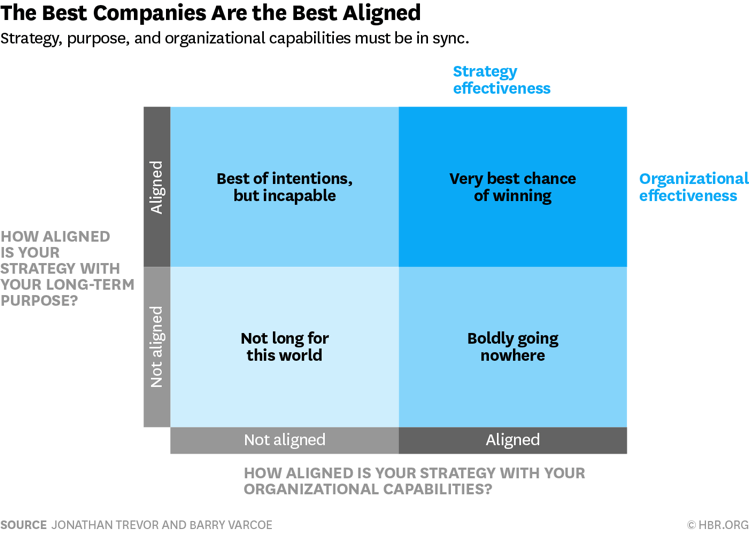Collaborative Project or Too Many Cooks?

Today, organizations are connected 24/7. Whether utilizing chat apps, project management tools, meetings or other modes of business communication, we’re always connected and collaborating with our colleagues. While these modern and classic methods still work to keep us connected and on the same page, juggling all of these tools can sometimes feel like collaboration for the sake of collaboration and not always optimized for company success.
Working as a team is valuable. However, many teams are working together more for company values and not the bottom line.
As Morten Hansen, UC Berkeley Professor and author, notes:
The goal of collaboration is not collaboration, but far better results. And if you have that dictum in your head, you will pick the right project, you will force the common goals, and you will get the results.
Today, tech and the need for teamwork gives the illusion that we are available all the time. A little green dot next to our username welcomes chats about multiple team projects at any given moment. This rapid exchange has led many to ask about the death of email in recent years.
The changing workplace is just one of the core collaboration traps hurting teams today. It goes beyond any potential for overwhelming tech. It reaches to our team structures. On- and off-site work are both mainstays, and not every person is ideal for team-based projects.
43% of Americans now work remote. As Gallup noted in its findings, “Leaders must gain scientific insight into employees’ evolving wants and needs and learn how to build an exceptional workplace.” This can be said for office-based workers as well.
Which all leads to a question more teams and managers must ask themselves, “Who do we really need on this project?”
Collaboration Solutions
The challenges of an evolving workforce may seem daunting. In actuality, they are manageable when addressed in chunks.
Tech
Tech should be a friend to any team and in many ways is its own contribution. With a continuous pipeline of development, companies can select the tools that best serve their organization or specific projects. The key is to analyze your options, make a choice and stick with it.
Say your team is building a client’s webpage. After analyzing your options as Project Manager, you choose Skype as your chat platform and Balsamiq for the wireframing. But along the way, the team has needs that go beyond Skype. You also find out that your Designer prefers Sketch, but your project is already underway.
In that case, make notes and address later when the team discusses the results of the overall project. It’s never too late to make changes. Just make adjustments that won’t upend workflows by switching tools mid-task.
When choosing your tools, aim for a streamlined approach. Some larger teams separate their tasks into different tools by departments. In other cases, an exciting new product might get shoehorned on the team for the sake of demoing something new. Either way, it’s best to cut this excitement and remain focused on what you are working with.
Team Structure
A company’s desire to be team-oriented can backfire without a proper structure. If this situation, teamwork becomes more overwhelming than helpful.
The team must decide what its goals are as a unit.
This can be a struggle for startups and small groups. In most cases, they take on an all-hands-on-deck mentality. This is excellent for achieving goals, but it makes a mess out of the structure. It’s best to establish a hierarchy early on whether it’s within a static team environment, or just for a single project.
Doing so won’t alleviate the burden of constant communication. However, a team structure does create efficient communication pipelines, even if it doesn’t reduce the number of conversations. With a hierarchy in place, each person knows who to contact when something is needed.
Furthermore, planning a team structure allows for you to see how each person functions. You may find that there is a designer redundancy. Or, you may notice a glaring need for additional UX help. By laying out your team, you begin to bring organization to work that can often become unruly.
Individual Preference
Not all employees are the same. Some thrive in team environments while others excel in smaller teams or solitary roles. It’s the job of the Project Manager and team leaders to assess where each member fits best. If overlooked, your team may find itself sacrificing results and souring a colleagues outlook on the job.
This fact-finding starts at an employee’s job interview and continues through employment. This requires team leaders to be active and engaged at all times.In doing so, you’ll discover key areas of interest that your team has. You never know what facet of the job brings out the best in your team until you start to ask.
When Solo Works Better
Your team’s capabilities and the project’s demand will determine which setup works best.
If you feel that a project is taking on team members just to fit company ethos, stop dead in your tracks. Instead, analyze the situation and your team. You may find that a singular person or small group may work better.
Use your fact-finding efforts in collaboration with the meritocracy of team performance. Many associate ideal solo workers as introverts who prefer minimal interaction, a firm schedule and time to process new information. In other scenarios, extroverts and ambiverts can be just as superb solo workers.
When determining if a person is ideal for small-team work, look for traits such as:
- Consistent job performance
- High intelligence
- Independent manager
- Fast yet thorough worker
- A team player that contributes whenever possible
- Stays in the loop of all applicable business
Some jobs may demand teamwork. Even on those occasions, there is room for you to meet structural demands and worker wants. By using precise role assignments, even a group-averse teammate can be part of the project. You can create options for these roles that minimize meetings, allow for more time to process information or leave room for solo work that loops back into the group’s overall work.
This is a happy balance that won’t always be achievable. However, with the proper team analysis, it is possible to meet all demands while improving efficiency and team satisfaction in the process.
The Perfect Collaboration
There is no one clear-cut answer to successful teamwork. What is the perfect workflow for one team is a calamity for another. But the best news is that any pain point can be addressed by setting collaboration and communication goals. If you find your team alignment is off, test your alignment and see where you fall on the chart below:

Never be afraid to reiterate the goals to your team. As long as you don’t overkill the subject, feel free to bring it up at daily recaps, weekly discoveries and in individual chats whenever necessary. In doing so, you drive home the purpose regardless your team’s size. With clear intentions, each person understands when and with whom they need to collaborate. To successfully drive home the message, never neglect the small tasks. Demonstrate how every point draws back to the big picture goal.
By taking an early proactive approach, your team will be confident of its size, structure and overall goals. This keeps the kitchen stocked with just the right amount of cooks and no unwanted mess.


